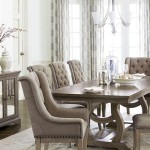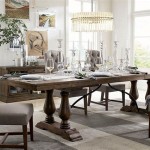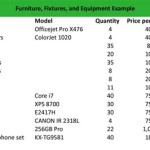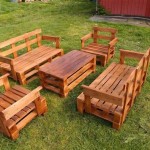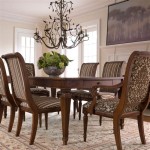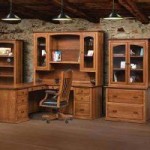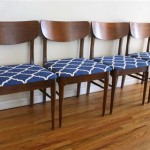At Home Cushions For Patio Furniture: Comfort and Style Combined
Patio furniture transforms outdoor spaces into extensions of the home, providing areas for relaxation, dining, and entertaining. However, the comfort and aesthetic appeal of patio furniture are heavily reliant on the cushions used. Selecting the right cushions is a crucial aspect of creating a welcoming and functional outdoor living area. This article will explore the various factors to consider when choosing at home cushions for patio furniture, delving into materials, styles, and maintenance to ensure long-lasting comfort and beauty.
The market offers a wide array of patio cushions, each designed with different features and intended for specific purposes. Understanding the available options allows homeowners to make informed decisions, optimizing their outdoor spaces for both comfort and visual appeal. The selection process should take into account the furniture's style, the intended use of the space, and the prevailing climate to ensure the chosen cushions are both suitable and durable.
Comfort is paramount when selecting patio cushions. After all, the primary purpose of cushions is to enhance the seating experience. The thickness and density of the cushion significantly impact its comfort level. A thicker cushion generally provides more support and cushioning. The material used for the cushion's fill also plays a vital role. Considerations include durability and the ease with which the cushion can be cleaned and maintained.
Understanding Cushion Materials: Fabric, Fill, and Durability
The lifespan and performance of patio cushions are largely determined by the materials used in their construction. Both the fabric and the fill contribute to a cushion's overall durability and resistance to the elements. Choosing the right materials is essential for ensuring the cushions remain comfortable and attractive for years to come.
Fabric Selection: Outdoor fabrics are designed to withstand exposure to sunlight, moisture, and fluctuating temperatures. Popular choices include:
- Olefin: Known for its resistance to fading, staining, and mildew, olefin is a synthetic fiber that is both durable and affordable. It is a common choice for outdoor cushions and rugs due to its ability to withstand heavy use and exposure to the elements. Olefin fabrics are often easy to clean, making them ideal for high-traffic areas.
- Acrylic: Solution-dyed acrylic fabrics offer superior colorfastness and resistance to fading, even with prolonged sun exposure. They are also water-repellent and resistant to mildew, making them well-suited for damp or humid environments. Acrylic fabrics are often more expensive than olefin but offer enhanced durability and a luxurious feel.
- Polyester: Polyester fabrics are budget-friendly and offer good resistance to abrasion and stretching. While they may not be as resistant to fading as acrylic or olefin, they are still a viable option for covered patios or areas with limited sun exposure. Polyester fabrics can be treated with water-repellent coatings to enhance their resistance to moisture.
- Sunbrella: This is a brand name, but is used often used to describe high-performance outdoor fabric. Sunbrella fabrics are made from solution-dyed acrylic, which means the color permeates the fibers, providing exceptional colorfastness and resistance to fading, mildew, and stains. They are often considered a premium option due to their longevity and luxurious feel.
Fill Materials: The fill determines the cushion's comfort and support. Common options include:
- Polyester Fiberfill: A cost-effective option, polyester fiberfill offers good cushioning and is relatively lightweight. However, it may flatten over time with heavy use. It is generally suitable for decorative pillows and cushions that are not subjected to constant weight. Polyester fiberfill is also relatively easy to clean and maintain.
- Foam: Foam provides excellent support and retains its shape better than fiberfill. Different densities of foam are available, with higher densities offering firmer support and longer lifespans. Foam is a good choice for seating cushions that require consistent support and resilience. High-density foam is more resistant to compression and deformation over time.
- Polyurethane Foam: A common choice for patio cushions, polyurethane foam offers a good balance of comfort and durability. It is available in various densities, allowing for customization of the cushion's firmness. Polyurethane foam is also relatively affordable and easy to work with.
- DryFast Foam: Specifically designed for outdoor use, DryFast foam is an open-cell foam that allows water to drain quickly, preventing mildew and mold growth. It is an excellent choice for cushions that will be exposed to rain or humidity. DryFast foam is more expensive than standard foam but offers superior performance in wet environments.
Durability Considerations: When selecting materials, it's crucial to consider the level of exposure the cushions will receive. For areas with frequent rainfall, water-resistant fabrics and DryFast foam are essential. In sunny climates, fabrics with high UV resistance are necessary to prevent fading. Regularly cleaning and maintaining the cushions will also extend their lifespan.
Styles and Designs: Matching Cushions to Patio Furniture and Décor
The aesthetic appeal of patio cushions is just as important as their comfort and durability. Selecting the right style and design will enhance the overall look of the outdoor space, creating a cohesive and inviting atmosphere. Considerations include the furniture's style, the surrounding landscape, and personal preferences.
Cushion Shapes and Sizes: Patio furniture comes in various shapes and sizes, requiring cushions that fit proportionally. Common shapes include:
- Square: Ideal for chairs and benches, square cushions provide a classic and versatile look. They are available in various sizes to accommodate different seating dimensions.
- Rectangular: Often used for chaise lounges and benches, rectangular cushions offer ample seating space and support. They can be customized to fit specific furniture dimensions.
- Round: Suitable for bistro sets and smaller chairs, round cushions add a touch of elegance and sophistication. They are available in various diameters to fit different seating areas.
- Custom Shapes: For unique or irregularly shaped furniture, custom-made cushions may be necessary. This ensures a perfect fit and optimal comfort. Many manufacturers offer custom cushion services to accommodate specific furniture designs.
Fabric Patterns and Colors: The choice of fabric pattern and color can significantly impact the overall aesthetic of the outdoor space. Consider the following:
- Solid Colors: Solid-colored cushions offer a clean and minimalist look, allowing the furniture and surrounding landscape to take center stage. Neutral colors like beige, gray, and navy are versatile and easy to coordinate with other elements.
- Stripes: Striped cushions add a touch of nautical charm and visual interest. Horizontal stripes can make a seating area appear wider, while vertical stripes can add height.
- Floral Patterns: Floral patterns bring a touch of nature and elegance to the outdoor space. Choose patterns that complement the surrounding landscape and existing décor.
- Geometric Patterns: Geometric patterns offer a modern and contemporary look. They can add visual interest and a sense of sophistication to the outdoor space.
Cushion Styles and Features: Beyond shape and pattern, the style of the cushion itself can affect the overall look and feel of the patio furniture. Common styles include:
- Box Cushions: Featuring clean, straight edges, box cushions have a tailored and formal appearance. They are often used for more structured furniture designs.
- Knife-Edge Cushions: With softer, rounded edges, knife-edge cushions have a more relaxed and casual look. They are suitable for a variety of furniture styles.
- Tufted Cushions: Tufted cushions feature decorative indentations or buttons, adding texture and visual interest. They can range from simple and understated to elaborate and ornate.
- Piped Cushions: Piped cushions have a decorative trim around the edges, adding a refined and polished look. Piping can be done in a contrasting color to highlight the cushion's shape.
The selection of cushion styles and features should complement the existing furniture and décor, creating a cohesive and visually appealing outdoor space.
Maintenance and Care: Extending the Life of Patio Cushions
Proper maintenance and care are essential for extending the lifespan of patio cushions and preserving their appearance. Regular cleaning, storage, and protection from the elements will help prevent damage and ensure the cushions remain comfortable and attractive for years to come.
Regular Cleaning: Periodic cleaning is crucial for removing dirt, stains, and mildew. Depending on the fabric and fill materials, cleaning methods may vary.
- Spot Cleaning: For minor stains and spills, spot cleaning with a mild detergent and water is often sufficient. Blot the stain gently with a clean cloth, avoiding harsh rubbing that can damage the fabric.
- Hose Down: For general cleaning, cushions can be hosed down with water and a mild soap solution. Ensure the cushions are thoroughly rinsed and allowed to dry completely before storing.
- Machine Washing: Some cushion covers are machine washable. Always check the manufacturer's instructions before washing to avoid damaging the fabric. Use a gentle cycle and mild detergent.
- Professional Cleaning: For stubborn stains or delicate fabrics, professional cleaning may be necessary. A professional cleaner can safely remove stains and restore the cushion's appearance.
Storage: Proper storage during the off-season or periods of prolonged non-use can significantly extend the lifespan of patio cushions.
- Indoor Storage: Store cushions indoors in a dry and well-ventilated area. This will protect them from moisture, sunlight, and extreme temperatures. Basements, garages, and storage sheds are suitable options.
- Outdoor Storage: If indoor storage is not available, use waterproof outdoor storage containers or covers to protect the cushions from the elements. Ensure the cushions are completely dry before storing them to prevent mildew growth.
Protection from the Elements: Taking simple steps to protect cushions from the elements can help prevent damage and extend their lifespan.
- Umbrellas and Awnings: Use umbrellas, awnings, or other forms of shade to protect cushions from direct sunlight, which can cause fading and deterioration of the fabric.
- Cushion Covers: Use waterproof cushion covers during periods of rain or heavy humidity. This will prevent water from seeping into the cushion and causing mildew growth.
- Regular Fluffing: Periodically fluff cushions to maintain their shape and prevent the fill from becoming compressed. This will ensure the cushions remain comfortable and supportive.
By following these maintenance and care guidelines, homeowners can ensure their at home cushions for patio furniture remain comfortable, attractive, and durable for years to come, maximizing the enjoyment of their outdoor spaces.

Outdoor Cushions Pillows At Home

Diy Outdoor Cushion In Less Than An Hour How To Make Cushions For Patio Furniture

How To Re Cover Outdoor Cushions A Quick Easy Diy Oh Yay Studio Color Painting Making Everyday Celebrating

Best Outdoor Cushions For Your Patio Furniture The Home

Greendale Home Fashions 24 In X 2 Piece Deep Seating Outdoor Lounge Chair Cushion Set Palm Leaves White Oc7820 The

Better Homes Gardens 44 X 21 Black Tropical Rectangle Outdoor Chair Cushion 1 Piece Walmart Com

Greendale Home Fashions 22 In X 44 Outdoor High Back Dining Chair Cushion Cayman Stripe 2 Pack Oc6809s2

2 Piece Tahiti Silver Outdoor Deep Seat Cushion Set At Home

Better Homes Gardens 44 L X 21 W Black Stripe 1 Piece Outdoor Chair Cushion Walmart Com

How To Easily Clean Outdoor Cushions So They Last For Years Smallish Home
See Also


